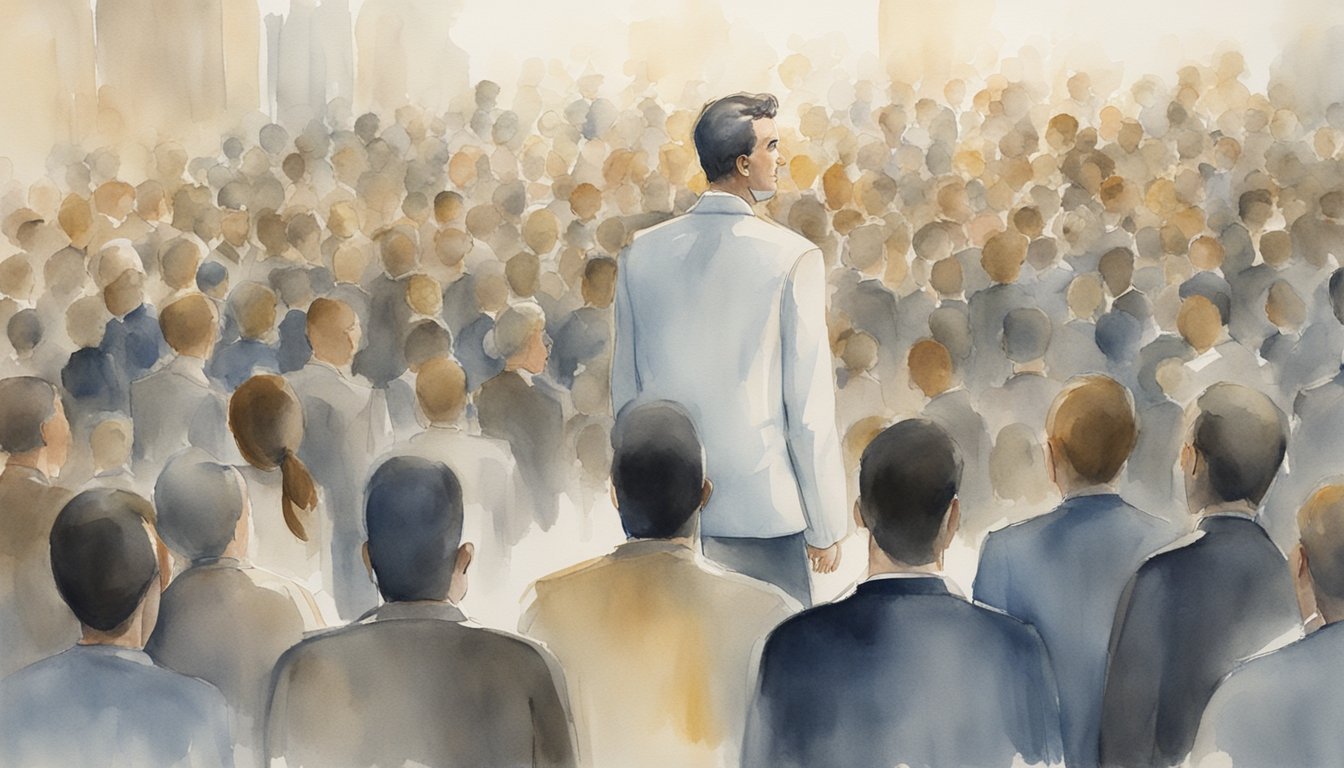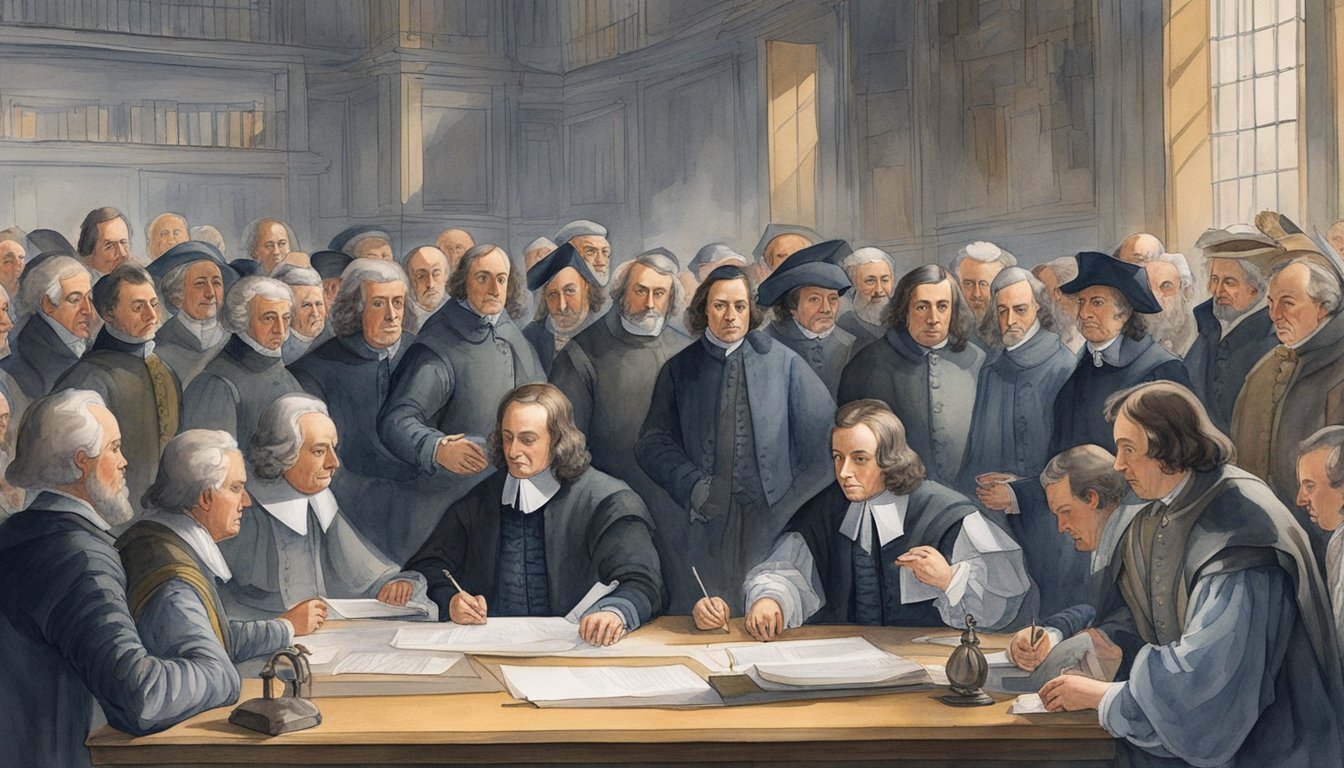Oliver Cromwell: Impact on English History

Oliver Cromwell was one of the most influential figures in British history.
Born on April 25, 1599, Cromwell rose from relative obscurity to become a key military and political leader during the turbulent mid-17th century. His role as Lord Protector of England, Scotland, and Ireland changed the course of British history and left a lasting legacy.

Cromwell’s early life in Huntingdon laid the foundation for his later achievements.
His military prowess during the English Civil Wars earned him recognition, and he played a crucial part in the defeat of the Royalist forces.
As a leader in the New Model Army, Cromwell was instrumental in the execution of King Charles I, an event that shocked the world Oliver Cromwell’s life.
As Lord Protector, Cromwell implemented numerous political and religious policies that reshaped the Commonwealth.
While his tenure brought economic and social reforms, it also sparked controversies and criticisms.
You can explore more about Cromwell’s life and impact at Oliver Cromwell – World History Encyclopedia.
Key Takeaways
- Oliver Cromwell was a key military and political leader in 17th century England.
- His role as Lord Protector significantly changed British politics and society.
- Cromwell’s actions and policies remain controversial to this day.
Early Life and Background

Oliver Cromwell was born in 1599 in Huntingdon, England.
His early years were marked by a modest upbringing despite a family with notable historical connections.
His education and marriage played significant roles in shaping his future path.
Family and Education
Cromwell was born into a family of landed gentry.
His father, Richard Cromwell, was a younger son of Sir Henry Cromwell, also known as the “Golden Knight,” who had significant wealth and influence in Huntingdon.
Oliver’s early education took place at a local grammar school, where he was taught by Thomas Beard.
He later attended Sidney Sussex College in Cambridge.
The college was Puritan in its religious leanings, which likely influenced Cromwell’s later religious beliefs and actions.
Marriage to Elizabeth Bourchier
In 1620, Oliver married Elizabeth Bourchier.
She was the daughter of a wealthy London merchant.
Their marriage brought financial stability and connections to influential families.
Elizabeth’s support and their close relationship were important throughout Cromwell’s career.
Together, they had nine children, which further rooted Oliver in family life.
Early Political Involvement
Cromwell’s first step into politics came in 1628 when he was elected as a Member of Parliament for Huntingdon.
His early political career faced several challenges due to England’s turbulent political landscape.
During this time, Cromwell opposed King Charles I, advocating for Parliamentary rights.
This political environment shaped his future role in the English Civil Wars.
The English Civil Wars
Oliver Cromwell was crucial in leading the Parliamentarian forces to significant victories during the English Civil Wars.
His rise to prominence, key battles, and complex relationship with Parliament shaped this tumultuous period in British history.
Rise to Prominence
Cromwell began as a relatively unknown figure.
He was a Puritan MP with no military background.
However, his strong beliefs and leadership skills quickly propelled him to prominence.
Cromwell’s dedication to the Parliamentarian cause earned him the trust of his peers.
He formed and led the New Model Army, a disciplined force that adhered strictly to Parliament’s ideals.
This move was instrumental in shifting the balance of power from the Royalists to the Parliamentarians.
Cromwell’s rise showcased his ability to transform the military and political landscape of England.
Key Battles and Victories
Cromwell’s strategic brilliance shone in several key battles.
At the Battle of Marston Moor in 1644, his leadership helped secure a crucial victory for the Parliamentarian forces.
This battle marked a turning point in the war.
The Battle of Naseby in 1645 was another significant victory.
Here, Cromwell’s forces decisively defeated the Royalist army.
This victory crippled the Royalists and showcased the effectiveness of the New Model Army.
The Battle of Edgehill in 1642 was one of the first major battles.
Though it ended inconclusively, it demonstrated Cromwell’s potential and the resolve of the Parliamentarian side.
Each of these battles highlighted Cromwell’s tactical acumen and the strength of his troops.
Relationship With Parliament
Cromwell’s relationship with Parliament was complex.
Initially, he was a staunch supporter of parliamentary powers against King Charles I. His actions and military successes gave him significant influence.
Over time, however, his growing power caused tensions.
In 1653, he dissolved the Rump Parliament, believing it was ineffective.
He then became Lord Protector, ruling with more authority.
This strained relationship underscored the difficulties in balancing power and ideals during the English Civil Wars.
Cromwell’s layered interactions with Parliament highlighted the challenges of leadership during such a turbulent period.
Military Campaigns in Ireland and Scotland
Oliver Cromwell led significant military campaigns in both Ireland and Scotland, leaving lasting impacts on these nations.
His strategies and actions had far-reaching consequences, shaping the historical context of the British Isles.
Campaign in Ireland
In 1649, Oliver Cromwell arrived in Ireland with the goal of reasserting English control.
The campaign began with a brutal siege at Drogheda, where Cromwell’s forces massacred the defending troops.
This event is still remembered for its severe violence.
Next, Cromwell turned his attention to Wexford.
The capture of Wexford in October 1649 also ended in a massacre similar to Drogheda.
These actions were part of Cromwell’s strategy to crush resistance swiftly by instilling fear.
The military campaign in Ireland lasted until 1653, significantly reducing the Irish population due to conflict and famine.
Conquest of Scotland
Following his campaign in Ireland, Cromwell led an invasion of Scotland in 1650.
The Scots had declared their support for Charles II, prompting Cromwell to act.
One key battle was the Battle of Dunbar in September 1650.
With a disciplined army, Cromwell swiftly defeated the Scottish forces.
In 1651, Cromwell achieved another decisive victory at the Battle of Worcester.
This battle marked the end of significant royalist resistance and solidified Cromwell’s control.
By 1652, Scotland was effectively under English rule and part of the Commonwealth.
These campaigns showed Cromwell’s military prowess and political acumen in securing victory and expanding English dominance.
Political Power and the Commonwealth
Oliver Cromwell’s rise to power was marked by significant events such as his role in the English Civil War and the establishment of the Commonwealth.
His actions during this period greatly influenced the political landscape of England.
From Civil War to Political Leader
Cromwell rose to prominence during the English Civil War, where he led the parliamentary forces against King Charles I. His military success gained him recognition and power.
He was instrumental in the trial and execution of Charles I, which led to the abolition of the monarchy.
As a military leader, Cromwell was effective and strategic.
His efforts helped the Parliamentarians secure victory.
This success paved the way for his entry into politics as a prominent figure, transforming him from a soldier to a political leader.
Establishment of the Commonwealth
The monarchy was replaced by the Commonwealth of England after Charles I’s execution.
Cromwell played a key role in this transition.
The Long Parliament was initially involved, but the Rump Parliament, a smaller segment, took on major responsibilities.
Cromwell’s influence was strong within the Council of State, which governed during the Commonwealth.
He became Lord Protector, essentially serving as a head of state, and held significant authority.
His rule saw the consolidation of power, and he established a government that sought to uphold a republican form of governance, though his tactics were often seen as dictatorial.
Dissolution of the Rump Parliament
Cromwell grew frustrated with the Rump Parliament’s inefficiency and factionalism.
In 1653, he directly intervened and forcibly dissolved it.
This act demonstrated his willingness to use military power for political ends.
Following the dissolution, Cromwell established the Barebones Parliament, which also struggled to govern effectively.
Eventually, he was appointed as Lord Protector, ruling as a de facto dictator.
The dissolution of the Rump Parliament marked a pivotal moment that underscored Cromwell’s dominance and his approach to governance, where he prioritized stability and control over parliamentary processes.
His rule was marked by significant military and political maneuvers, leading to a centralized form of governance under his leadership.
Lord Protector of England
Oliver Cromwell became the Lord Protector of England after leading parliamentary forces to victory.
His rule was characterized by military control, religious policies, and constitutional developments.
Assumption of Power
Cromwell assumed the title of Lord Protector in 1653.
His rise followed the English Civil Wars and the execution of King Charles I. The Instrument of Government established the role, making Cromwell the head of state.
You will find that he wielded significant power over England, Scotland, and Ireland.
His position as Lord Protector was initially designed to be a check against absolute rule, but Cromwell’s military background often meant his rule was strict and centralized.
Governance and Administration
In his role, Cromwell sought to reform England’s political structure.
He used the New Model Army to maintain order and enforce policies.
The Protectorate largely replaced the monarchy with a republic.
You’ll note that his governance combined military and civilian control, leading to a unique administrative style.
He pursued Protestant religious policies, promoting Puritanism and restricting Catholic practices.
Efforts were also made to foster economic productivity and reduce tax burdens, though these reforms met with mixed success.
The Protectorate Era
The Protectorate, lasting from 1653 to 1658, was marked by various administrative and military challenges.
Cromwell navigated these with the help of the New Model Army.
Foreign policy aimed at strengthening England’s position in Europe, including conflicts with Spain and the Dutch.
Domestically, his rule saw increased centralization of power, which some viewed as tyrannical.
You can explore how this period ended abruptly with Cromwell’s death in 1658, leading to a swift collapse of the Protectorate and the eventual restoration of the monarchy.
Oliver Cromwell’s legacy as Lord Protector remains complex.
His efforts to balance governance, religious reforms, and military prowess define this unique chapter in English history.
Links to relevant details have been provided to deepen your understanding and support further reading on key points.
Oliver Cromwell’s Religious Policies
Oliver Cromwell’s religious policies were deeply influenced by his Puritan faith, and he aimed to reshape the religious landscape of England.
His approach towards different religious groups varied, reflecting both tolerance and strict control.
Puritanical Influences
Cromwell was a devout Puritan, and his policies heavily reflected this belief.
He sought to purify the Church of England, removing elements he believed were too close to Catholicism.
He supported a simpler form of worship and was against traditional rituals and the hierarchy of bishops.
Puritan beliefs also emphasized personal piety and the importance of a moral society.
Cromwell’s rule saw the promotion of Puritan clergy and the enforcement of strict moral codes.
You would find less tolerance for activities considered sinful under Puritan beliefs, such as gambling and theater.
Cromwell believed that a godly society was essential for the nation’s well-being.
Attitude Towards Various Religions
Cromwell’s approach to different religious groups was complex.
While he was a strict Puritan, he showed a degree of religious toleration.
He allowed Protestant groups like the Quakers to practice their faith, even though they were seen as radical.
His policies were more lenient towards Jews, whom he allowed to return to England after centuries of exile.
On the other hand, Cromwell was less tolerant of Catholics.
Catholics faced heavy restrictions, and their practices were closely monitored.
He justified this by considering Catholicism a threat to the Protestant Commonwealth.
This stance was rooted partly in the long-standing conflict between Protestant England and Catholic powers like Spain and France.
Legislative Reforms
Cromwell implemented several legislative changes to promote his religious vision.
He dissolved the traditional structure of the Church of England, removing bishops from power and eliminating many ceremonies he viewed as non-biblical.
The Church was reorganized to be more in line with Puritan ideals, focusing on preaching and community-based practices.
Cromwell also passed laws to curb what he saw as moral decay.
Acts were put in place to regulate behavior, targeting blasphemy, adultery, and other actions deemed sinful in Puritan eyes.
These reforms were part of his broader goal to create a society that reflected his religious convictions and ensured moral discipline.
Economic and Social Reforms

Oliver Cromwell introduced significant changes during his rule, focused on property rights, welfare, and trade to stabilize the Commonwealth.
Land Reform and Property Law
Cromwell enacted legal reforms to address property disputes and land ownership.
He aimed to protect property rights, ensuring fairness in land distribution.
This was particularly important in East Anglia and other regions where land ownership was a key issue.
Old feudal practices were modified or abolished, making it easier for common people to claim and defend their property.
This move sought to balance power between the aristocracy and commoners, ensuring a more equitable land ownership system.
Social Contract and Welfare
Cromwell’s administration took steps to improve social welfare.
The government supported the idea of a social contract, where the state would take responsibility for the well-being of its citizens.
Initiatives were put in place to assist the poor and needy.
For example, local parishes were tasked with caring for orphans and the elderly.
This was part of a broader effort to create a more inclusive and supportive community within the Commonwealth.
Trade and Finance
Under Cromwell, trade and finance were vital areas of focus.
Policies were introduced to boost commerce and streamline financial systems.
Efforts included establishing new trade routes and granting trade monopolies to certain companies to encourage economic growth.
Finance reforms aimed to reduce inefficiencies and corruption in tax collection, making it more reliable and effective.
These measures not only strengthened the economy but also increased the resources available to support other reforms and initiatives.
Cromwellian Military Leadership
Oliver Cromwell’s military leadership was marked by his strategic innovations, effective mentoring, and distinct leadership style.
His approach transformed the Parliamentarian forces into a formidable army, playing key roles in pivotal battles and victories.
Leadership Style
Cromwell’s leadership style was both disciplined and inclusive.
He valued loyalty and competency over social status or religious beliefs, recruiting soldiers based on merit.
This approach helped foster a strong sense of unity and purpose among his troops.
As Lieutenant General under Sir Thomas Fairfax, Cromwell upheld strict standards but also inspired his men through personal courage and commitment.
He often led by example, participating in front-line battles.
His presence in the thick of combat earned him the respect and trust of his soldiers.
This hands-on leadership style was critical in maintaining high morale and disciplined ranks.
Tactical Innovations
Cromwell introduced several tactical innovations that revolutionized military strategies of his time.
He was instrumental in the formation of the New Model Army, an organized and well-trained force that boasted a higher degree of professionalism compared to other contemporary armies.
The New Model Army was characterized by strict discipline, rigorous training, and effective use of cavalry.
Cromwell’s use of cavalry, known as the “Ironsides,” was particularly innovative.
They were heavily armored and highly mobile, allowing for swift and decisive strikes against enemy forces.
This cavalry played a crucial role in several key victories, including the Battle of Marston Moor.
Cromwell’s emphasis on rigorous training ensured that his troops could execute complex maneuvers effectively, giving them an edge in battles.
Mentorship and Command
Cromwell was known for his strong mentorship skills.
He actively mentored his officers, emphasizing the importance of both personal integrity and military competency.
His mentorship extended to soldiers of all ranks, fostering a culture of mutual respect and continuous improvement.
Cromwell’s command structure was relatively flat compared to traditional hierarchies, which encouraged open communication and swift decision-making.
This approach not only improved operational efficiency but also empowered lower-ranking officers to take initiative.
His ability to inspire and mentor was a key factor in the sustained effectiveness and cohesiveness of his military units throughout the conflicts.
Death and Legacy
Oliver Cromwell’s death in 1658 marked the end of a prominent era in British history.
His legacy remains deeply debated, with strong views on his impact and actions.
Circumstances of Death
Oliver Cromwell died on September 3, 1658, at the age of 59.
He suffered from a form of malaria and kidney stone disease.
His health further declined after the death of his daughter, Elizabeth.
Cromwell’s death occurred at a crucial time, leading to uncertainty in the government.
Cromwell had named his son, Richard Cromwell, as his successor.
Richard, however, lacked his father’s political acumen and military skill, resulting in a swift decline in authority and control.
Posthumous Reputation
Cromwell’s reputation after death varied greatly.
Royalists despised him for his role in the execution of King Charles I and his harsh rule.
They exhumed his body and performed a posthumous execution when Charles II returned to power.
In contrast, many Puritans and Parliamentarians saw him as a champion of their cause.
Over time, figures such as Thomas Carlyle and Winston Churchill contributed to a more nuanced perspective, acknowledging both his strengths and his failures.
Historical Impact
Cromwell played a key role in the English Civil Wars and the temporary abolition of the monarchy.
His leadership in battles like the Battle of Worcester solidified his position as a formidable military leader.
As Lord Protector, he implemented significant political and social changes.
Even in death, Cromwell’s influence continued, as debates about his actions and policies shaped British political thought.
His body was initially buried in Westminster Abbey, only to be later desecrated by his enemies, symbolizing the deep divisions he left behind.
Cromwell’s Controversies and Criticisms
Oliver Cromwell’s leadership is dotted with controversies and strong opinions, ranging from his brutal campaigns in Ireland and Scotland to his rule as Lord Protector.
These points highlight key criticisms and differing historical perspectives.
Reputation Among Historians
Oliver Cromwell has divided opinions among historians for centuries.
Some see him as a radical who changed English politics forever.
He played a major role in the English Civil Wars and was key in the execution of King Charles I.
However, other historians view Cromwell as a tyrant.
They argue that his actions were not just radical but oppressive.
His rule included harsh measures against his enemies and suppression of dissent.
Controversies in Ireland and Scotland
Cromwell’s campaigns in Ireland and Scotland are among the most criticized aspects of his career.
In Ireland, his forces are blamed for the massacre at Drogheda in 1649.
This event remains a dark chapter in Irish history, with many viewing it as an act of brutality.
In Scotland, Cromwell’s military actions were also severe.
He led campaigns that resulted in deaths and hardships for many Scots.
His approach in both Ireland and Scotland shows his willingness to use extreme measures to achieve his goals.
Assessment of His Rule
Cromwell’s time as Lord Protector is often assessed through two lenses.
Some argue that he promoted the development of modern parliamentary democracy.
His regime saw reforms that shaped the future political landscape of England.
However, his rule is also criticized as being tyrannical.
He dissolved parliaments that opposed him and ruled with a strong hand.
His enforcement of strict Puritan moral codes added to the perception of his authoritarian nature.
The debates on Cromwell’s legacy continue, reflecting the complexity of his actions and policies.
Frequently Asked Questions

Oliver Cromwell’s life was marked by significant events including his rise to power, his role in the English Civil War, and his controversial actions in Ireland.
Here, we answer some common questions about his life and legacy.
How did Oliver Cromwell die?
Oliver Cromwell died on September 3, 1658, from natural causes.
He was buried in Westminster Abbey, but his body was later exhumed and posthumously executed when the monarchy was restored.
What religion did Oliver Cromwell practice?
Oliver Cromwell was a devout Puritan.
He believed in a strict form of Protestantism and sought to reform the Church of England to align more closely with his Puritan beliefs.
How did Oliver Cromwell rise to power?
Oliver Cromwell rose to power by successfully leading parliamentary forces during the English Civil Wars.
He eventually became Lord Protector of the Commonwealth of England, Scotland, and Ireland from 1653 until his death in 1658.
You can read more about his rise on Britannica.
What actions did Oliver Cromwell take towards Ireland?
Oliver Cromwell led a brutal military campaign in Ireland from 1649 to 1650.
His forces captured several towns, such as Drogheda and Wexford, leading to mass civilian casualties.
This campaign had long-lasting negative repercussions for Anglo-Irish relations.
Who took over after Oliver Cromwell’s leadership?
After Oliver Cromwell’s death, his son, Richard Cromwell, succeeded him as Lord Protector.
Richard’s tenure was short-lived, lasting only about nine months before he resigned, leading to the restoration of the monarchy under Charles II in 1660.
What was Oliver Cromwell’s role in the execution of Charles I?
Oliver Cromwell played a significant role in the trial and execution of King Charles I. He was a leading member of the court that found the king guilty of high treason.
Charles I was subsequently executed on January 30, 1649.
Learn more about his role here.






